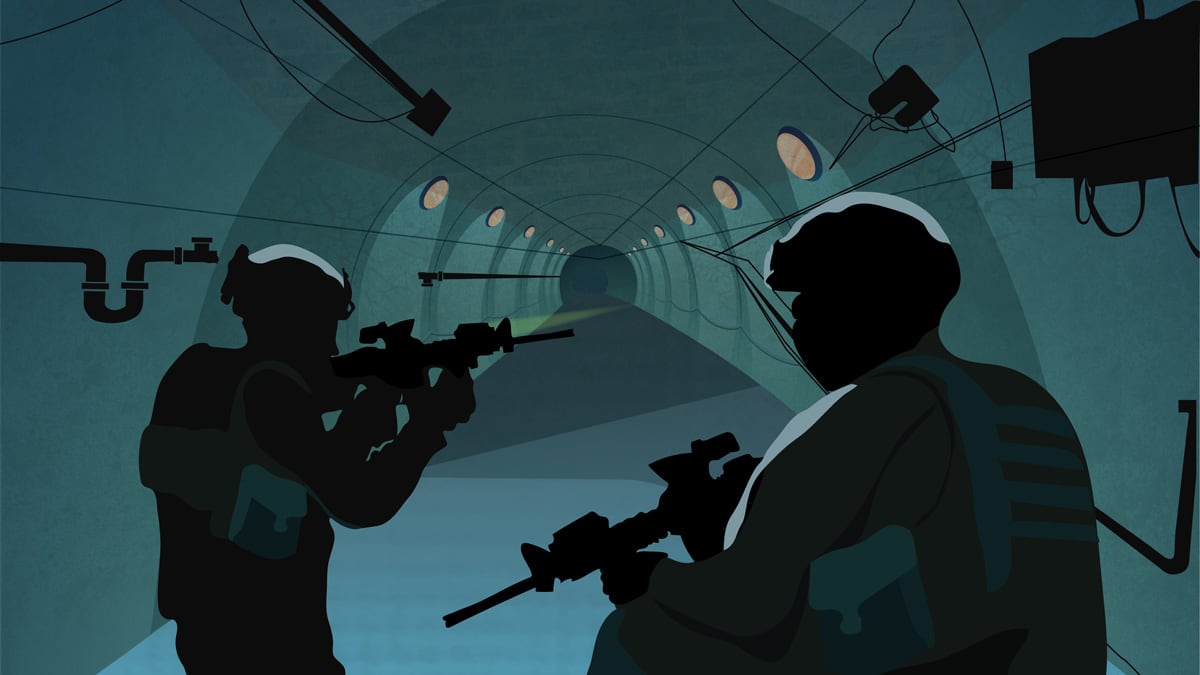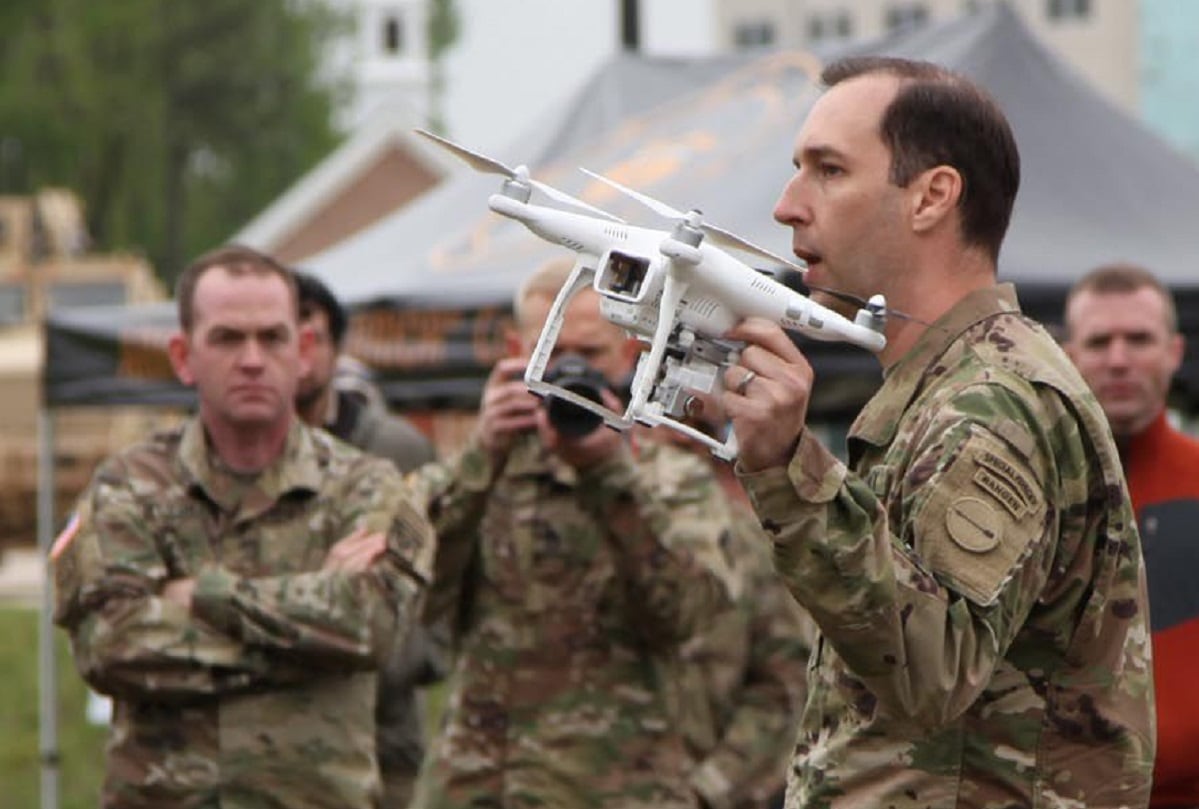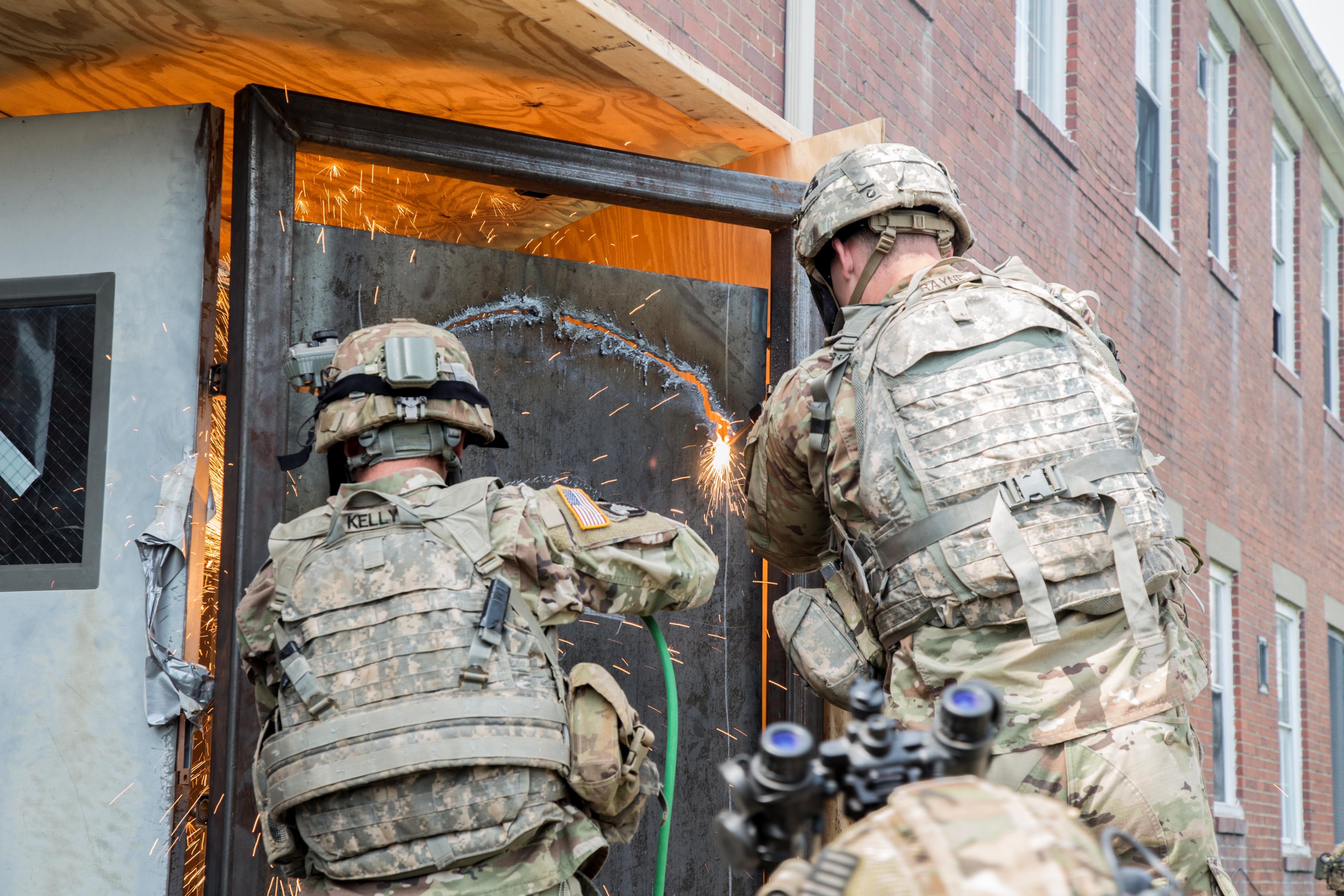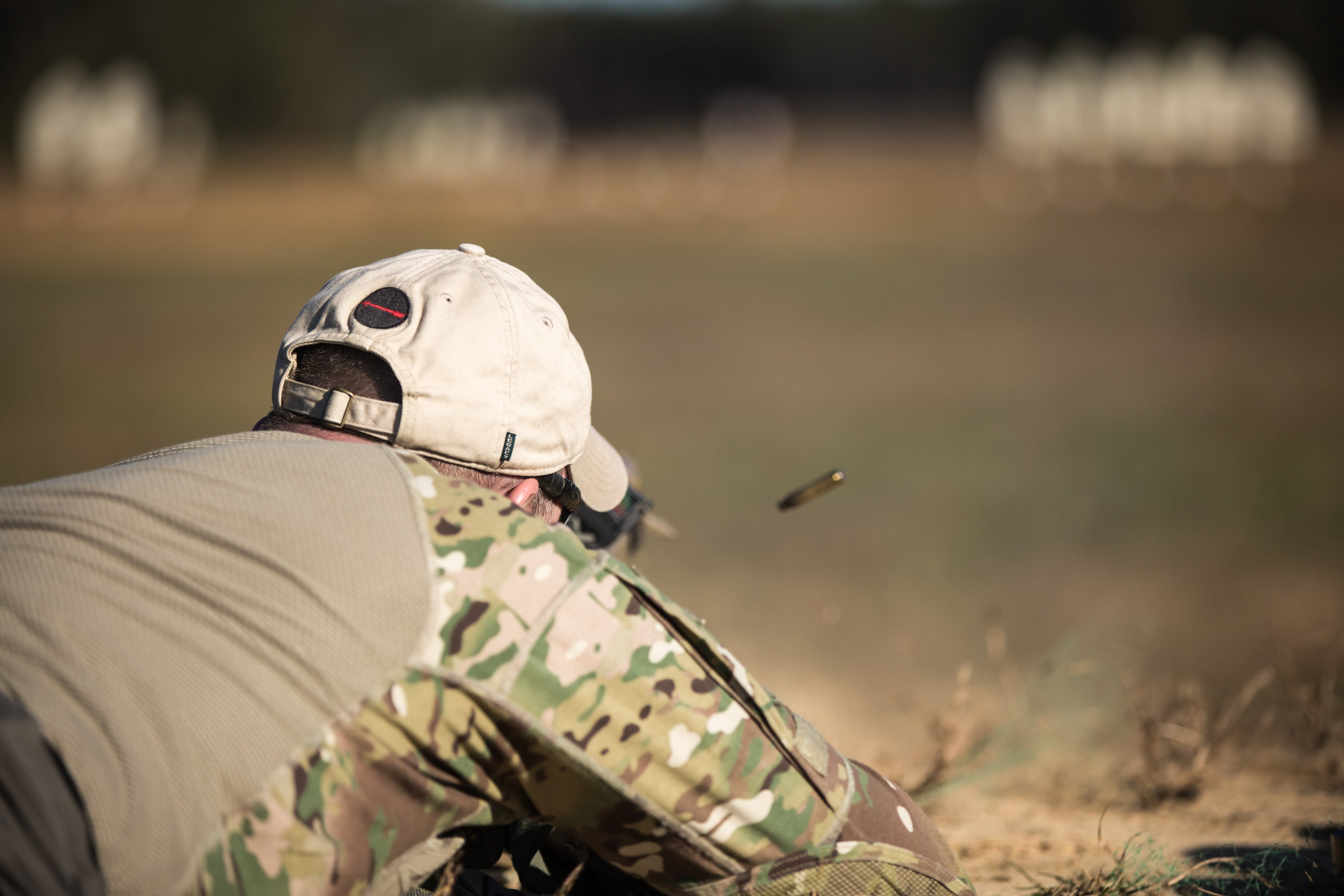For nearly 15 years a little known but highly influential Army group has been in the middle of how the Army learns immediate lessons from combat, adapts to the evolving battlefield and saves soldiers' lives.
It’s called Asymmetric Warfare Group, and the Army is shutting it down next year.
The Army made its official announcement today that by mid-2021, AWG will be discontinued.
An Army statement to Army Times:
“The functions of AWG, including the solutions to current and emerging threats, will transition to other Army organizations. Also, to ensure the utility of the organization’s work over the past 14 years is not lost, all lessons learned will be maintained by the U.S. Army Combined Arms Center (CAC), via the Center for Army Lessons Learned (CALL), Centers of Excellence (COEs), and other TRADOC enterprise stakeholders.”
RELATED

In early 2019, Army Times accompanied AWG trainers — many of them multiple combat tour veterans, both uniformed and retired civilian contractors — to Fort Bragg, North Carolina, as they conducted subterranean warfare training for soldiers with the 1st Brigade Combat Team of the 82nd Airborne Division.
That effort, to train most of the Army BCTs in underground fighting, was just one of many examples of how AWG took an Army problem, either tactical or material, and found a fix.
By their own accounting, AWG provided 24 materiel solutions, 92 non-materiel solutions and at least 35 solutions that combined both material and non-material efforts. Those spanned everything from the Lethal Miniature Aerial Missile, or Switchblade, to reducing electromagnetic signature reduction.

Along the way, AWG published 72 key guides, from training aides to handy pocket reference guides and full handbooks.
Those publications covered Russian New Generation Warfare, Chinese land warfare strategies and the aftermath of bloody fighting in Mosul and Raqqah, and many other subjects. From these documents a larger Army and joint strategy has emerged in how to fight wars now and in the future.
Some of those papers are the foundational documents for the Army’s practical approach to great power competition, many predating the actual shift in the National Defense Strategy.
Exact reasons for AWG closure are not clear, but sources who spoke with Army Times on the condition of anonymity said that the cuts came from last year’s house cleaning that eliminated a number of programs to make room in the budget for other modernization efforts.
The group initially formed as a focused group to counter the improvised explosive device threat as it emerged early in the Iraq War in 2003.
There isn’t much comparable to AWG, an organization that has had the permission to go to the battlefield, see the threat directly, come up with a solution and, once approved, get it implemented across the force rapidly.
At times, AWG has had as many as 400 staff assigned to it, with locations both at Fort Meade, Maryland, the headquarters, and a dedicated training facility at Fort A.P. Hill, Virginia.

And it’s not yet clear what is going to be done with the $94 million urban training facility, considered state of the art by some urban warfare experts, complete with a tunnel system and areas for complex training.
“The Army is currently determining the final disposition of the facility,” a spokesman told Army Times.
AWG is essentially divided into four teams — Able, Baker, Charlie and Dog. Able and Baker switched back and forth doing four-month rotations in combat zones over a period of about six years, said Col. Scott Shaw, group commander of AWG.
Charlie served as a training squadron while Dog was in charge of concepts and integration.
The core of their mission was to make soldiers more lethal, protect soldiers and advise commanders on localized trends or enemy tactics, techniques and procedures.
That involved some MacGyver-like work in spotting nuances in enemy threats and connecting dots across the combat theater.
The group helped develop the RHINO that assisted teams in Iraq to find IEDs. They worked on a Fast Obscuring Grenade used as a counter-sniper protection system.
If bullets were flying — at Americans, Brits or other allies in Iraq or Afghanistan — AWG members were there to figure out what the enemy was doing and how they were adapting downrange.
They’d then work on a solution and spread what was successful to pre-deployment units and beyond in their training capacity.
That was until 2012.
The Army put AWG with Army Training and Doctrine Command and tasked it with figuring out how the Army was going to pivot to large-scale ground combat operations, Shaw said.
But the wars continued, and AWG continued to provide theater support.
Two veterans of AWG spoke with Army Times while on assignment at the National Training Center in Fort Irwin, California, this past week.
Retired Army Lt. Col. Michael Bowman spent 21 years in service before joining AWG 10 years ago as a civilian.
Bowman has seen the organization work to counter threats from IEDs, drones and subterranean warfare, and assist in training up the new security force assistance brigades that have come into the Army in recent years.

“From the theater back to the Pentagon, we articulate what is really happening on the ground, from observation to solution, to either train differently downrange, at the (combat training centers) or the schoolhouses,” Bowman said.
Lt. Col. Scott Akerley serves on AWG’s Group Operational Analysis Team.
Much of the knowledges and best practices are being gathered for the Center for Army Lessons Learned to hold.
“We’re actually putting together a synopsis of those in written form,” Akerley said.
The lieutenant colonel knew before he joined AWG four years ago that the work they did helped soldiers in combat.
AWG trainers developed tactics his soldiers used during a 2009 Iraq deployment, such as better search techniques, counter-sniper and sensitive-sight exploitation. They just didn’t know it came from AWG.
But a specific problem that vexed his command brought AWG in close.
The soldiers were working in the Hawija, Iraq, area and seeing RKG-3 anti-tank grenades being used against their forces. AWG trained his soldiers on new tactics that essentially stopped the threat, he said.
“I believe they saved my soldiers and other soldiers' lives,” Akerley said.
Shaw remembers his first encounter with the nascent AWG when he was commanding soldiers in combat in Iraq. Soldiers had just found an IED in the stairwell of a building that had been secured in a key market.
He expected a lengthy cordon and EOD disposal unit. But a soldier radioed him saying that a guy with the counter-IED group, the predecessor to AWG, had disarmed it with his Leatherman multi-tool.
Numerous times, in theater and back stateside, he would bump into AWG staff, either doing training or in the midst of the fighting.
At the end of the Iraq War, when his unit continued on with combat advising, staying in Kuwait, AWG advisors came in to help with transitioning the Iraqi Army.
He observed the same kind of assistance when he commanded troops in Afghanistan, just before taking over command at AWG. So, taking command of the group was a choice assignment, he said.
Perhaps the legacy of AWG that has permeated the Army since at least 2011, and may do so beyond, is its Adaptive Soldier Leader Training and Education. The ASLTE program came down to AWG as one of its early directives from TRADOC.
That effort resulted in a shift from “instructor-based learning” to a “student-centric learning environment” according to a 2014 Army statement.
The preservation of AWG’s work, not just the field studies and training, but its open-minded approach and unvarnished truth-telling across the echelons, is what many alumni of the group hope to see happen.
For that information and advances to be lost, “that would be almost criminal,” Shaw said.
“I will sleep well at night knowing that I and this organization have done what we were charged to do and then some by a large margin,” Shaw said. “I am tremendously proud, and that’s the personal side.”
Todd South has written about crime, courts, government and the military for multiple publications since 2004 and was named a 2014 Pulitzer finalist for a co-written project on witness intimidation. Todd is a Marine veteran of the Iraq War.




